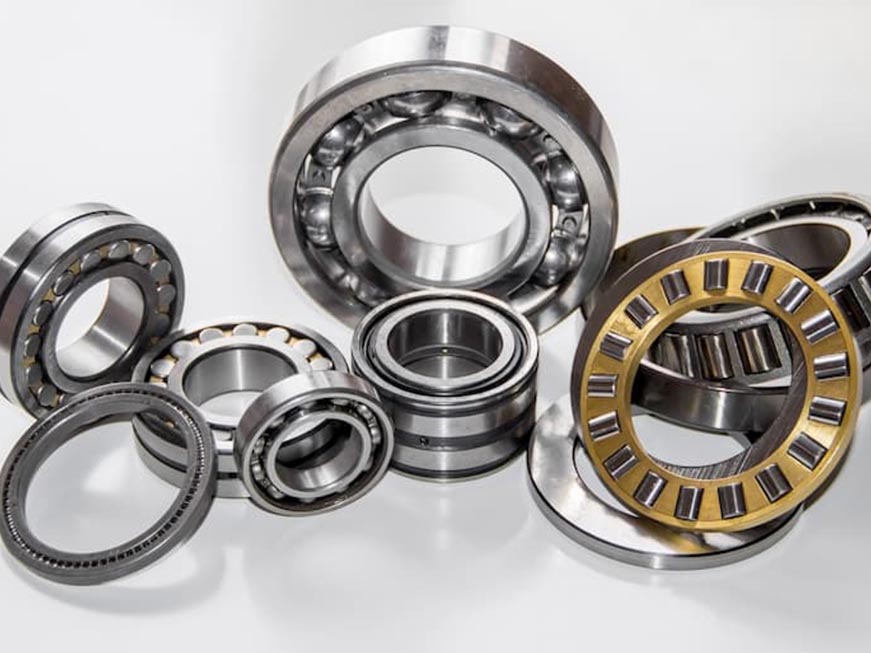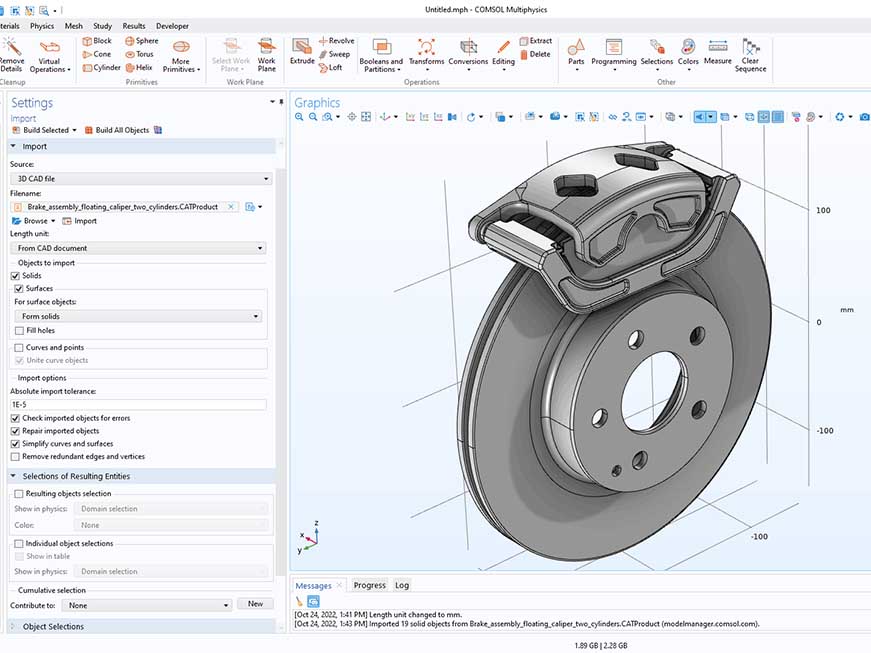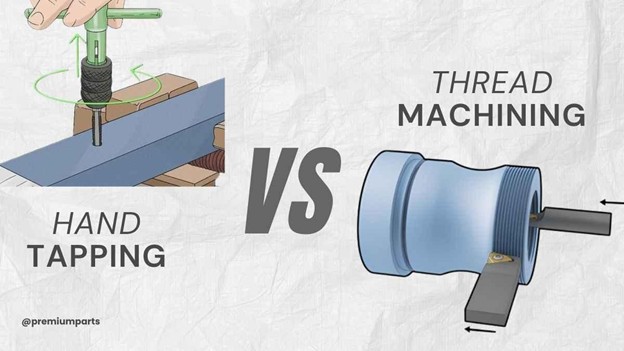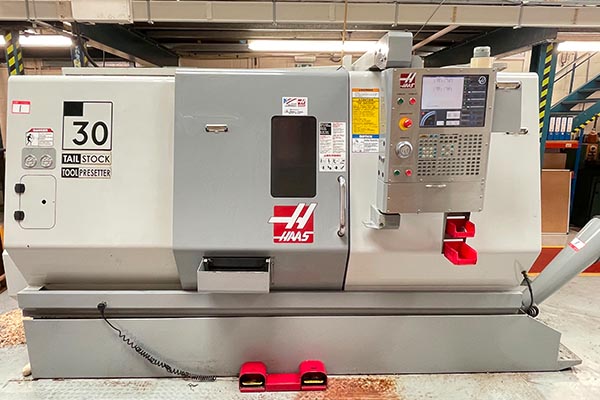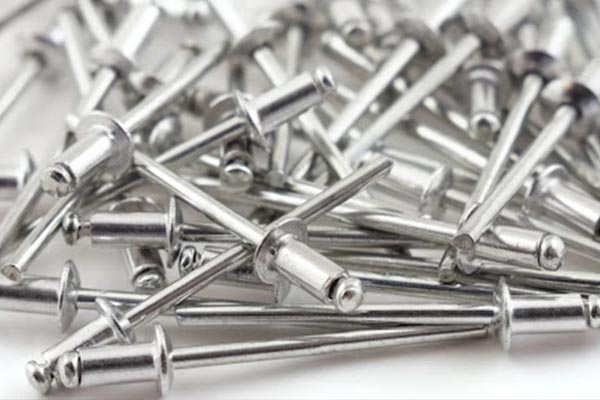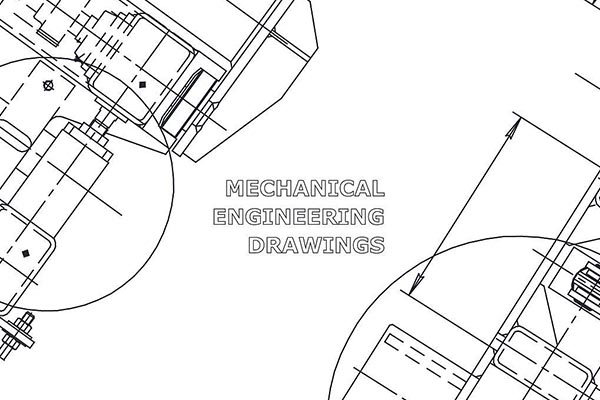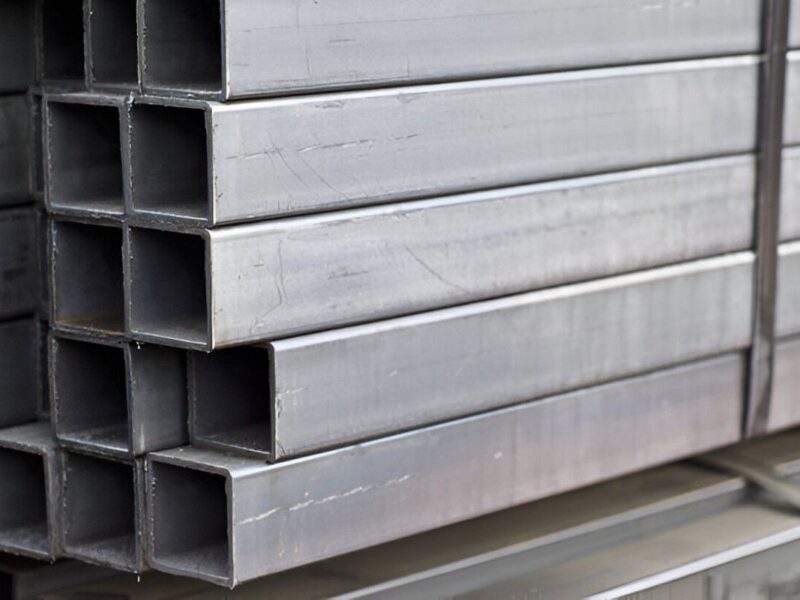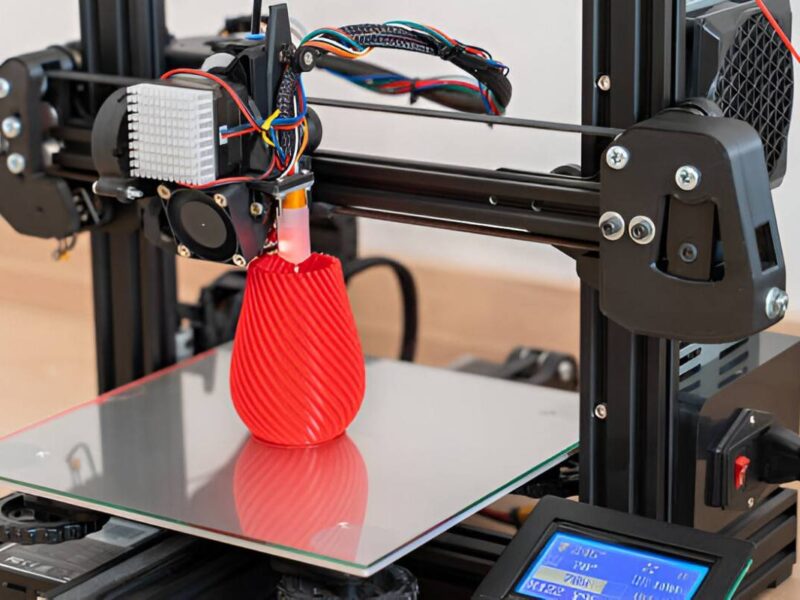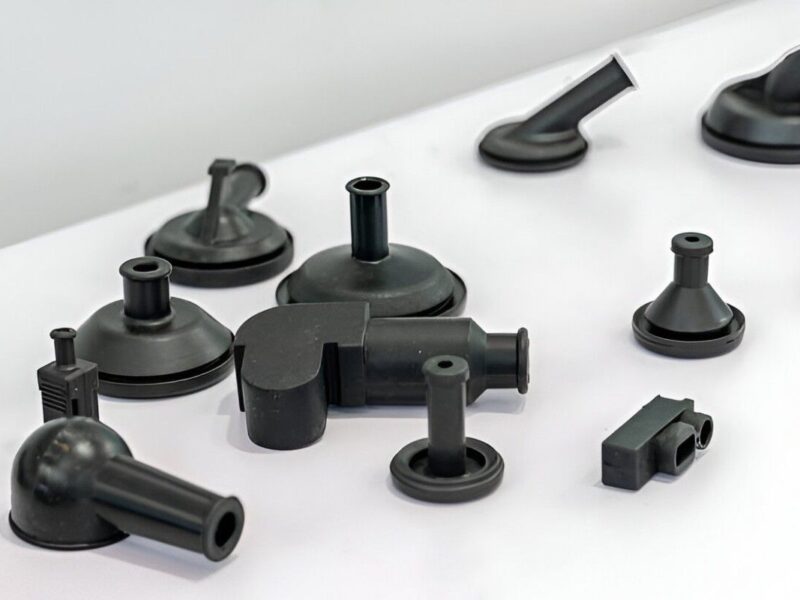The manufacturing industry is leaping with rapid prototyping techniques; however, which one is best to use? CNC Machining Vs AM (Additive Manufacturing). These are the two most frequently used techniques. Machining creates parts by removing material from metal pieces and working on different axes. However, the AM uses metal powder to make the final product by adding other layers. However, choosing between them is a daunting task. Many think of CNC machining as a production process, while AM is a prototyping method.
CNC can create parts with high precision, quality, and durability. On the other hand, AM metal prototyping is low-cost and is good for smaller-scale production of simple parts. Although AM is cost-effective, we can make CNC machining affordable with the right strategy.
Each method has its benefits and drawbacks, so deciding which one is better requires considering many factors, including cost, availability, scalability, production time, etc. This article takes you through an in-depth comparison of CNC machining vs AM prototyping. Let’s consider some facts to deduce which one is better.
Difference Between CNC Machining Vs AM For Prototyping
CNC machines have decades of history and are known for their manufacturing capabilities. This method includes computer control for the mass production of precise and quality parts. These machines can produce the parts according to the client’s requirements. It uses computer technology and automatic tools to cut and design the parts. The operator turns the CAD model of the product into programming instructions (G-code). This code then defines the path and movements of tools after the operator loads them into the machine system. CNC machining is one of the most efficient methods for creating a part with high-end precision. It’s a subtractive method in which we remove the material from the block with the help of tools. This method offers good tolerances and mechanical properties.
On the other hand, additive manufacturing (AM) manufactures the part by adding layers of powdered metal and binding it with adhesive. This method can create any complex design, whether you need mass production or quick delivery. One significant advantage of AM manufacturing is that it is cost-effective. It includes less material waste than CNC, which cuts the material and removes unnecessary parts. Besides, this method is also best for small-scale production.
Importance of CNC and AM in Metal Prototyping
Both CNC machining and AM machining play a significant role in the manufacturing of metal parts. These prototypes help test the parts’ design and validate them for large-scale production. Operators can identify design issues, ensure that the final parts fit right in where needed, and give the best performance. Moreover, validating designs before starting the actual production saves costs. It analyses the issues and offers better customized solutions. Thus, when choosing between CNC machining and AM prototyping, there are various factors to consider. The major factors include the design complexity, materials’ properties, production scale, and amount spent. Understanding the limitations and benefits helps you make a better choice. Keep reading; there’s much more to digest.
CNC Machining Vs AM – Quality and Cost Comparison
CNC machining demands more investment than AM prototyping. You can use AM prototyping in an office and small setups to produce parts. However, CNC is for more professional and large-scale production. It features expensive tools that cost far more than ordinary AM machines. So, does CNC cost more than AM? CNC machining is more efficient than AM when it comes to quality and precision. It can create parts quickly at a large scale with minimum errors.
However, these machines, whether CNC or AM, are unavailable in the normal customer price range. We do not include the machinery price and investment when you order parts from Premium Parts. We only charge for the material and manufacturing services.
Advantages of CNC Machining for Metal Prototyping
CNC machining can machine different metal parts for smaller to larger industries, such as aerospace and automobiles. Besides, it’s best for manufacturing and prototyping. Premium Parts and many others like us, who emphasise quality, frequently take orders for many types of prototyping. Advantages of CNC machining include high quality, scalability, tolerance, and precision. Here’s the in-depth detail of the CNC Machining:
Mechanical Properties
CNC and AM machining both offer different properties to the parts. For example, AM machining processes like Selective Laser Melting (SLM) manufacture parts by layering the metal powder. CNC manufacturing cuts the material and performs different actions like drilling and milling, to create parts. Although AM can create strong parts, the mechanical properties offered by CNC machining are unbeatable. It retains the natural physical properties of the metal as it stays physically consistent without requiring any layers or adhesives. Thus, the products have minimal errors and are stronger in build.
Scalability
When it comes to small-scale production, AM prototyping is more beneficial than CNC machining. The reason is that 3D printing needs small setup times, although the manufacturing process is relatively slow. However, when it comes to large-scale production, CNC machining becomes more efficient. Although AM prototyping is suitable for creating a few units of products for the time being, CNC machining is best for the long run.
If you require more units with consistent designs and complex geometries at a large scale, CNC machining is a faster and easier method. With CNC machining, manufacturing one product can lead to the production of thousands in one go.
Tight Tolerances
CNC machining offers better accuracy and precision than AM prototyping. This means we can turn any product design into reality just according to the requirements. CNC prototyping offers a tolerance of +/- 0.025 mm. However, the high-end AM machines can achieve a tolerance of +/-2.00 mm. Moreover, CNC machining provides repeatability and consistency in designs for metal parts manufacturing. This is important when we need to produce similar parts or multiple prototypes for any requirement.
Importance of Tolerances
Tolerance means the difference between the dimensions of the part design and the actual part. Tight tolerances ensure that the part is exactly according to the design and fits perfectly where needed. Industries like automobiles, medical, and aerospace need tight tolerances, as even a small deviation can cause major issues.
Material Compatibility and Selection
CNC machining can work on different materials, such as metals and plastics. This versatility allows operators to select the best material according to the future functionality of the part. Thus, CNC implies no process limitation. CNC can work on all materials, whether hard materials like steel or soft materials like ABS. Common materials include titanium, brass, aluminium, steel, stainless steel, copper, etc. CNC can handle ABS, Acrylic, PEEK, Nylon, and Acetal from plastics. However, there are many considerations for the selection of materials, such as:
- Machinability: How easily we can cut and shape the material.
- Strength: Can the material bear strength and pressure? Is it durable enough?
- Corrosion Resistance: The ability of a material to protect itself from rust, humidity, and other environmental factors.
- Cost: The cost of raw material and its machining.
- Heat Resistance: Machining processes generate heat, and materials should withstand temperatures.
- Surface Finish: The requisite finish of the product and texture according to its use.
CNC machining also offers smooth and high-quality surfaces of parts, which is a plus factor. Thus, CNC machining is a versatile machining process for producing metal parts and offering high precision. And there’s no denying that its advantages nullify its drawbacks.
Advantages of AM for Metal Prototyping
CNC machining is best for metal parts for most manufacturing or prototyping scenarios. It is especially suitable for upscaling and mass production. However, additive manufacturing has many other advantages, such as cost-effectiveness and on-demand production. Explore some significant benefits of AM machining here:
Speed and Cost-effectiveness
The CNC machining cannot handle prototypes with tight deadlines. CNC machines require more time for setup, making AM an obvious solution. As AM’s setup times are short, it’s the best solution to create quality parts quickly and deliver them on demand. Besides, CNC machining usually manufactures the parts in batches, increasing costs. However, additive manufacturing allows parts to be produced on a smaller scale. This reduces the need for larger inventories and offers cost-effectiveness.
Internal Geometries
CNC machining can produce parts with strict tolerances and work on different geometries. However, it can’t work perfectly on parts from the inside. The internal geometries are challenging to handle with CNC machining. However, Additive Manufacturing can easily handle complex shapes.
Range of Materials
Unlike CNC manufacturing, additive manufacturing cannot work with a variety of materials. It is limited to only a few, including titanium, aluminium, and stainless steel. However, CNC can work on various metals, plastics, and other materials.
Minimal Waste
Additive manufacturing only uses the material it needs to produce a specific part. Unlike CNC, which cuts the material and creates parts, it uses material powder layers. So, the material wastage is minimal, consisting of support structures. Generally, operators use these support structures to maintain the shape of the part.
Which One to Choose, CNC Machining Vs AM for Metal Prototyping?
When manufacturing metal prototypes, CNC machining is generally preferable. This method creates precise parts and offers repeatability by keeping the designs consistent. However, the choice of process depends upon your requirements and preferences.
You can choose CNC manufacturing in the following situations:
- When you need stronger parts with better mechanical properties.
- When tight tolerance and precision are a requirement.
- You need multiple copies of products with a consistent design.
- The project may need to be scaled up in the future.
- The project needs parts with round corners or edges.
Situations for which Additive Manufacturing is suitable include:
- None of the above situations applies when one or a few products are required.
- Products require complex internal geometries.
- When there’s a limitation of time and it needs urgent prototyping.
Summing Up
CNC machining Vs AM both have advantages and disadvantages. However, their choice is based on your needs and preferences. These methods can work together to create high-quality parts, no matter what complexity they need. If you are still confused about what manufacturing to choose for your metal prototypes, contact Premium Parts. Our experts can guide you in selecting the best course of action by knowing your requirements and preferences.
FAQs
Can we use CNC machining Vs AM prototyping together?
Both have limitations and advantages, so we can use them together. For example, additive manufacturing can create parts with complex geometries, while CNC can work on finishing and post-processing. CNC can smooth the surfaces of the manufactured parts and shape the features with precision.
What are some disadvantages of AM prototyping?
With benefits, drawbacks are natural in the manufacturing industry. The significant disadvantage of AM is that it is capital-intensive. Although the process is cost-effective, the investment in machinery can still cost above $2,000,000. Another disadvantage is that the build rate is slow.
What are the disadvantages of CNC machining?
CNC machining cuts and trims a block of material and removes it chunk by chunk with tools to make a shape. Thus, it leads to massive material waste with a 50% scrap rate. Moreover, the cost of operation is higher than that of AM prototyping.
Which has more setup costs: CNC Machining Vs AM?
CNC requires a huge investment due to the high-end machinery and setup required. The prices vary from tens to millions, depending on the configuration you need. Besides, tooling and fixtures need different setups, which enhances the cost. Conversely, Additive Manufacturing is also expensive, but not more than CNC. It often crosses $1 million for the latest models. However, its overall setup cost is lower than CNCs, but only for small-scale production.


